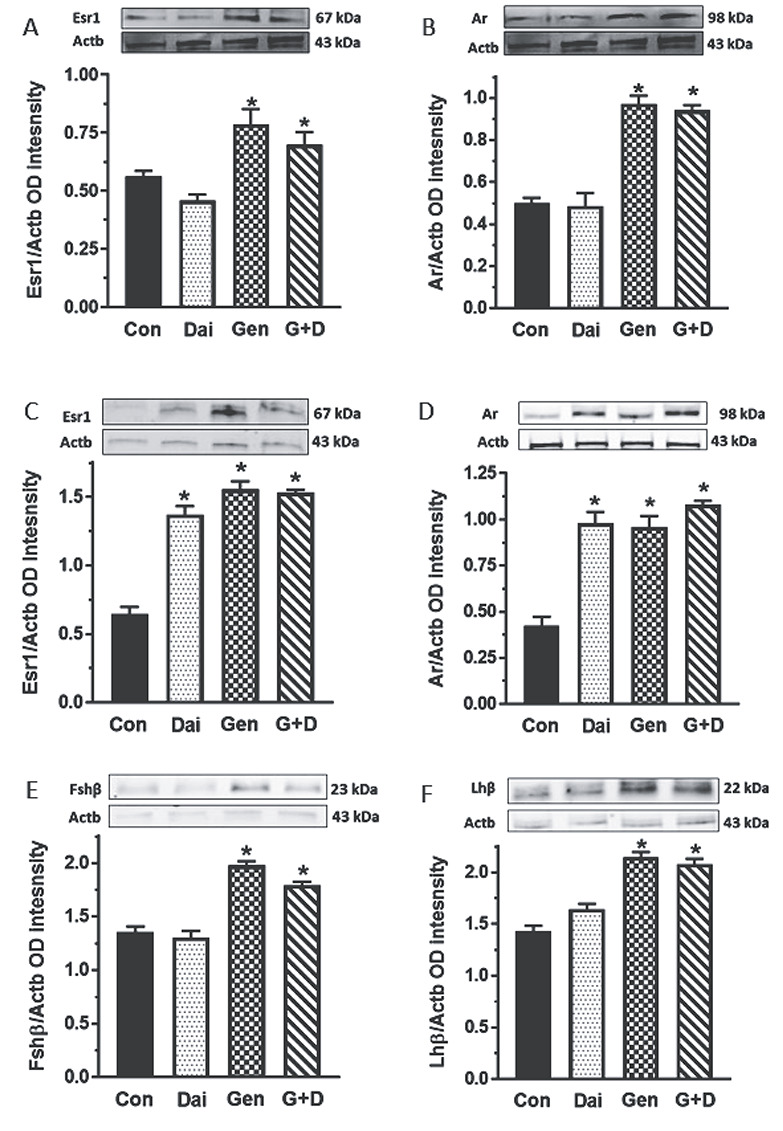Figure 8.

Differential soy isoflavone effects on gene expression in the testis-pituitary gland axis. Male rats at 35 days of age were maintained on a control diet (Con) or control diet supplemented with daidzein (Dai), genistein (Gen) or both isoflavones (G+D) for 14 days. After sacrifice, tissues were obtained and processed by western blotting procedures to measure testicular estrogen receptor-1 (Esr1) (A) and androgen receptor (Ar) (B) and pituitary Esr1 (C), AR (D), Fshβ (E) and Lhβ subunit proteins (F). Proteins were normalized to actin (Actb) (Fshβ = 21 kDa, Lhβ = 22 kDa, Esr1 = 67 kDa, Ar = 98 kDa, Actb = 43 kDa; *P <0.05 vs. control).
